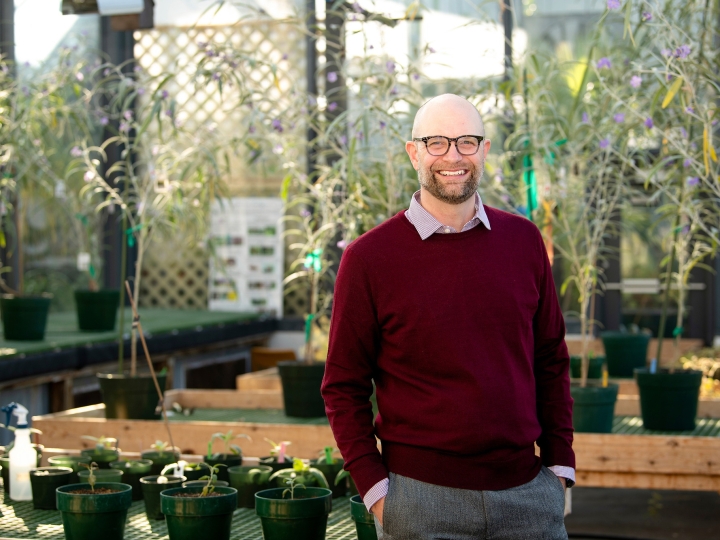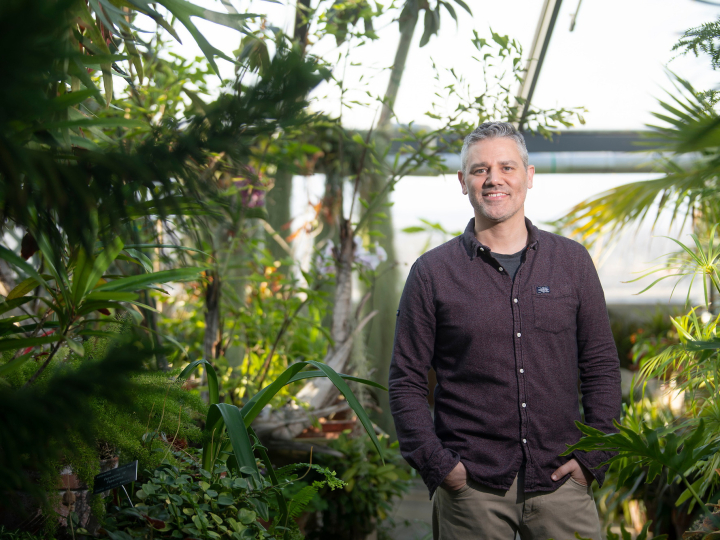Student Biomedical Engineering Projects Edge Closer to Real-world Use
April 25, 2017
Each year, seniors in Bucknell's College of Engineering devote hundreds of hours to developing novel products that solve real-world problems. The senior design program — a graduation requirement for all undergraduate engineers — offers an invaluable learning experience in practical problem-solving, but ultimately it only reflects the first steps of the multistage process of design, iteration and refinement. Senior design students identify areas of genuine need and craft elegant solutions to address them, but upon graduation, the admirable starts they've made are too often shelved away.
Now, members of Bucknell's highly regarded biomedical engineering program are picking some of senior design's most promising products back off the shelf, in an effort to turn undergraduate work into real-world medical devices that can save lives.
In the past 12 years, four of the nearly 50 senior design projects biomedical engineering majors at Bucknell pursued have resulted in patents, according to Professor Dan Cavanagh, biomedical and chemical engineering. "That's a pretty good hit rate for undergraduate work," Cavanagh said. "But then only 2 or 3 percent of patents ever become products — the rest are just ideas."
In effort to help more of the devices Bucknell engineers create transition from well-conceived prototypes to life-saving products, Cavanagh and fellow Biomedical Engineering Professor Eric Kennedy imagined a program offering students another intensive experience in practical problem-solving. As biomedical engineering students have been working with clinicians and researchers from the Geisinger Health System, a regional health-care provider and research institution, on summer research projects for more than a decade, expanding the partnership was a perfect fit.
Launched last summer, the Medical Device Development Program (MDDP) pairs new teams of students with Geisinger personnel who consulted on previous senior design projects in an effort to move those projects forward, not only through further design improvements, but through market analysis, intellectual-property research and other business-end considerations. The program receives support from an endowment funded by Bucknell alumnus Joe Ciffolillo '64, P’84.
The eight students participating in last summer's program formed two teams, each representing an interdisciplinary collaboration of engineers from a variety of backgrounds as well as management students, who lent a totally different perspective that the program organizers say is crucial to successfully bringing a product to market.
"They're members of a team," Cavanagh said of the management students. "They're integrated into the engineering design and the engineers are exposed to the management side of it as well."
With support from their professors and Geisinger staff, the students spent the summer working to advance their designs and committed to a half-credit independent study in the fall semester where they further refined their prototypes. Five students have continued working on the project into the spring.
"What's kept me going is that I really want to see this project through to the end," said Rebecca Osborne '17, a mechanical engineering major. "And honestly, it's fun."
Osborne's team, which also included biomedical engineering major Katie Solley '17 and chemical engineering major Pamela Johnson '17, worked on a potentially lifesaving device called the dual-stopper syringe, which began in senior design and was patented in 2013. The syringe allows emergency responders treating patients with cardiac trauma in volatile environments like LifeFlight helicopters to more efficiently inject an important drug, adenosine.
"If a patient's heart is beating very quickly, they're often given adenosine, a drug that basically resets your heart," explained Solley. "The drug has a half-life of 10 seconds — as soon as it gets into your body it starts degrading. To get it all the way through your body, it has to be followed really quickly by a saline flush, a syringe of saline that you put in right after."
Rather than perform two separate injections, the dual-stopper syringe allows caregivers to inject the drug and saline in a single action. The team not only succeeded in developing a much sleeker and easy-to-handle prototype, but identified a manufacturer — Allentown, Pa.-based ProtoCAM, to create a series of model devices — which they are now testing with Geisinger LifeFlight nurses.
The second team had a powerful real-world experience as well, albeit one that they didn't plan for. The students began the summer intending to improve on a neuromuscular block monitor, a device used to monitor how deeply anesthetized a patient is during surgery, only to quickly discover that a company had begun marketing a similar device just a few weeks earlier. "It was a blessing and a curse," said Kennedy. "It really validates that some of our ideas are worthwhile."
Rather than starting over, the team decided to purchase the on-market device and launch a pilot study with Geisinger physicians to evaluate it in the clinic. "There are a lot of things that happen in the background to get it approved by their engineering department," explained Addison Haxo '17, one of the students working on the neuromuscular block team. "We worked with them and also created surveys and other methods of testing whether this is an improvement over the devices they're currently using. By the fall semester we were able to get it into the OR."
The undergraduate engineers say the MDDP experience has offered new and exciting perspectives on their other undergraduate work.
Solley, who is now concurrently developing her own senior design project, said working on the dual-stopper syringe project has enhanced her senior design experience.
"Sometimes, in MDDP, we'll look at something and ask, why did they make this decision?" Solley said. "Now in my senior design project I think, if this were an MDDP project, how would someone else interpret this? I document things insanely well and look at my project differently because of MDDP."
Haxo, also a biomedical engineering major, said the program opened his eyes to career opportunities he'd like to pursue. "Initially I was thinking of going to med school — I was on that track," said Haxo. "During the program, I realized I wasn't really interested in medicine itself as much as patient interaction and being able to work with people. Working with different departments at Geisinger, as well as different people on the team made me realize that there are so many different ways to get to that end goal of being able to help people."
Haxo is now considering a career as a consultant.
Students Fatima Rezaei '17, Henry Stann ’17, Michelle Archambault ’17 and Kate Mowery ”17 also took part in the program.

